What is Injury Care?
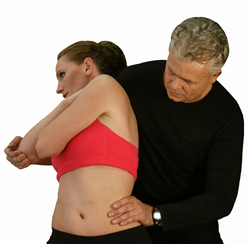
Dr. Abelson treating
Injury Care or rehabilitation programs focus upon returning your body to a state of full function without further injuring yourself in the process. Our primary objective with our Injury Care programs is to:
- Resolve your injury
- Increase neurological and motor control
- Build strength, and increase
- Restore function.
We can achieve these results through a process of both therapy (Active Release Techniques with other adjunctive therapies) and exercise.
Note: Only after you have completely rehabilitated from an injury and restored good muscle endurance and motor control (neurological control) should you consider applying athletic performance strategies to your training.
Click on each of the following tabs for more information.
- Prevalence of RSIs
- Understanding RSIs
- Effects on your Body
- Importance of Rehabilitation
- Principles of Injury Care
- ART Can Help
 Prevalence of RSIs
Prevalence of RSIs
Active Release Techniques are effective for all types of injuries. When it comes to soft tissue injuries the greatest percentage of these injuries are Repetitive Strain Injuries (RSI). In fact the cost of these injuries has over taken all other healthcare expenditures and are now the greatest drain on our health care system.
According to the U.S. Department of Labor, Occupational Safety and Health Administration (OSHA), repetitive strain injuries are the nation’s most common and costly occupational health problem, affecting hundreds of thousands of north american workers, and costing more than 100 billion dollars per year in related costs.
Repetitive Strain Injuries (RSI) caused by cumulative trauma are now the major cause of injuries in the workforce. Statistics show that the number of patients suffering from cumulative trauma has now surpassed those suffering from back pain.
RSI cases have increased at a phenomenal rate of 670 % over the last five years.
Common therapies such as cross friction massage, heat, cold, electrical stimulation, rest, exercise, and surgery – have all failed to treat cumulative trauma effectively.
Understanding Repetitive Strain Injuries (RSI)
Repetitive Strain Injuries are a result of specific, measurable, physical factors. To understand how repetitive strain injuries occur, it’s helpful to review the Repetive Motion Formula. (Copyright Dr. Mike Leahy)
The following formula describes the impact of the various physical factors upon the tissues of the human body.
I = NF/AR
I = Insult to the tissue. N = Number of repetitions. F = Force of tension of each repetition as a percentage of maximum muscle strength. A = Amplitude of each motion. R = Time spent relaxing between repetitions (lack of pressure or tension on the involved tissue).
The only way to decrease the incidence of “carpal tunnel syndrome” or CTS is to manipulate these four factors ( N, F, A, and R) to reduce the total insult to the tissues.
Effects of Soft Tissue Injuries on your Body
Weak and Tight Tissues: Repetitive effort, for example, tends to make muscles tighten. A tight muscle tends to weaken; a weak muscle tends to tighten. And on it goes.
Friction – Pressure – Tension: As a result of weak and tight tissues, internal forces rise. Friction, pressure, or tension can be present at the same time. If one or more of these factors is high, an acute injury and inflammation can result — even without external forces being applied.
Decreased Circulation – Edema: Increased forces on tissues results in decreased circulation. Edema results if pressure is applied over one of the vulnerable, low-pressure lymphatic channels. External forces – in the form of a constant pressure or tension injury — may also decrease circulation or cause edema.
Adhesion – Fibrosis: Adhesions can occur as a result of acute injury, repetitive motion, and constant pressure or tension. Cellular hypoxia, from restricted circulation, causes fibrosis and adhesions to occur between tissues. When the friction-pressure-tension factor is severe, or when an acute injury occurs, two additional factors come into play.
- Tear/crush syndrome.
- Inflammatory response.
Tear or Crush: The physical tearing and crushing of the tissues – microscopic or macroscopic – can occur when sufficient force is applied. This can be the result of an external force, result from acute injuries, or occur from internal stresses.
Inflammation: Inflammation is a result of any injury and begins the adhesion process. The cycle progresses from inflammation into the “weak-and-tense” phase.
There are many extrinsic factors which affect the cycle, but they do it in predictable ways.
- Smoking and diabetes tend to decrease circulation and perpetuate the injury cycle.
- Thyroid deficiencies increase muscular tension and accelerate the “weak and tense” factors of the Cumulative Injury Cycle.
- Hormonal changes – due to excessive body weight, hysterectomy, and pregnancy lead to predictable alterations to affected tissues.
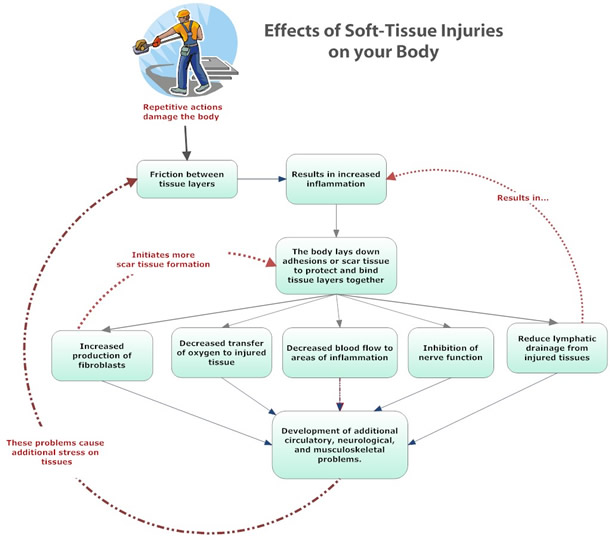
Copyright 2012 – Release Your Pain:2 edition
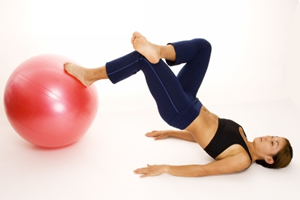 Importance of Rehabilitative Care
Importance of Rehabilitative Care
Injury care and rehabilitation training is not just for resolving existing injuries, it is also a critical preliminary step for preparing your body to accept and benefit from advanced conditioning and performance training. It can actually help you turn back your biological clock.
It is essential that you start slowly, especially if you have been physically inactive for a period of time. Rehabilitation requires patience and time! Remember, your body needs time to heal from your injuries. Many people, in their enthusiasm to reach their goal, make their injuries worse by not giving their body sufficient time to heal.
When we treat you for a musculoskeletal injury, we will provide you with guidelines for gently healing your body without causing undue stress, injury, or pain! But it is your responsibility to listen to your body and understand its signals.
Principles of Injury Care
In general terms, the following rules are a few fundamental principles that you should keep in mind as you work through your rehabilitation.
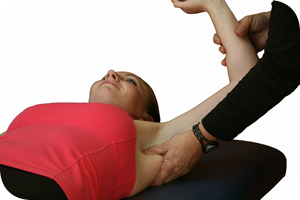 Give your body a chance to heal: Rehabilitation (unlike athletic training) requires that you perform your exercises and daily routines within a completely pain-free zone; essentially a zone of safety.
Give your body a chance to heal: Rehabilitation (unlike athletic training) requires that you perform your exercises and daily routines within a completely pain-free zone; essentially a zone of safety.
Don’t develop abnormal neuromuscular patterns: Exercising in a manner that causes pain will often result in the development of abnormal neuromuscular patterns as your body tries to work around the pain-causing areas. This may lead to further injury.
Many conventional rehabilitation strategies commonly do not succeed because they do not address the underlying neuromuscular problems. They are often designed to make you work through your pain (as in work- hardening programs). This only causes you to create or reinforce the abnormal motor responses which in turn continues to keep you in pain.
Don’t make yourself more sensitive to pain: If you work through pain caused by tissue damage, you run the risk of central sensitization. This is a nervous system process which causes you to become more sensitive to pain. The only way to break this pattern is to perform your exercises in a pain-free zone.
We commonly have patients come to our clinic who have exercised through their pain for years! They are always amazed at how, by exercising and doing daily routines within a pain-free zone, we were able to help them break their pain- cycle in just a few short weeks.
What works will vary from person to person so listen to your body and adjust the routines accordingly.
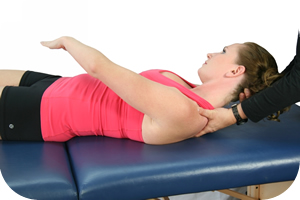 ART Can Help
ART Can Help
We use ART to treat a broad range of soft tissue injuries, including the following:
- Arthritis
- Achilles Tendonitis
- Ankle Injuries
- Back Pain/Injuries
- Bicepital Tendonitis
- Bunions
- Bursitis
- Carpal Tunnel Syndrome
- Compartment Syndrome (Chronic)
- De Quervain’s Tenosynovitis
- Dupuytren’s Contracture
- Foot Pain/Injury
- Frozen Shoulder or Adhesive Capsulitis
- Gait Imbalances
- Golfers/Tennis Elbow (Tendonitis)
- Golf Injuries
- Hammer Toes
- Hand Injuries
- Headaches
- Hip Pain
- Iliotibial Band Syndrome
- Impingement Syndromes
- Joint Dysfunction
- Knee Meniscus Injuries
- Knee Pain
- Leg Injuries
- Muscle Pulls or Strains
- Muscle Weakness
- Myofascitis
- Neck Pain
- Nerve Entrapment Syndromes
- Performance Care
- Plantar Fasciitis
- Post-surgical Scarring and Adhesions
- Repetitive Strain Injuries
- Rib Pain
- Rotator Cuff Syndrome
- Running Injuries
- Scar Tissue Formation
- Sciatica
- Shin Splints
- Shoulder Pain
- Sports Injuries
- Swimmers Shoulder
- Tendinitis
- Tennis Elbow
- Thoracic Outlet Syndrome
- Throwing Injuries
- TMJ
- Weight Lifting Injuries
- Whiplash (Hyperextension/Hyperflexion Injury)
- Wrist Injuries
